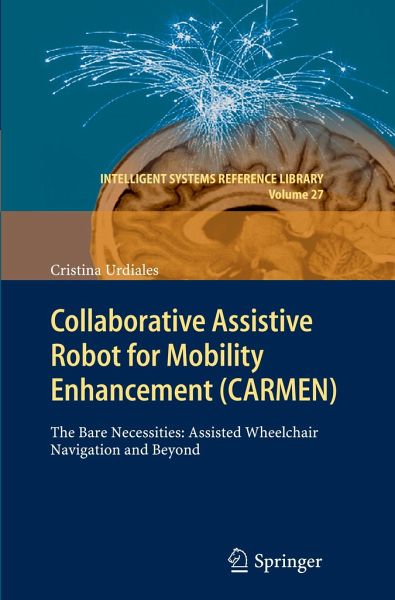
Collaborative Assistive Robot for Mobility Enhancement (CARMEN)
The bare necessities: assisted wheelchair navigation and beyond
Versandkostenfrei!
Versandfertig in 6-10 Tagen
113,99 €
inkl. MwSt.
Weitere Ausgaben:

PAYBACK Punkte
57 °P sammeln!
In nowadays aging society, many people require mobility assistance. Sometimes, assistive devices need a certain degree of autonomy when users' disabilities difficult manual control. However, clinicians report that excessive assistance may lead to loss of residual skills and frustration. Shared control focuses on deciding when users need help and providing it. Collaborative control aims at giving just the right amount of help in a transparent, seamless way.This book presents the collaborative control paradigm. User performance may be indicative of physical/cognitive condition, so it is used to ...
In nowadays aging society, many people require mobility assistance. Sometimes, assistive devices need a certain degree of autonomy when users' disabilities difficult manual control. However, clinicians report that excessive assistance may lead to loss of residual skills and frustration. Shared control focuses on deciding when users need help and providing it. Collaborative control aims at giving just the right amount of help in a transparent, seamless way.
This book presents the collaborative control paradigm. User performance may be indicative of physical/cognitive condition, so it is used to decide how much help is needed. Besides, collaborative control integrates machine and user commands so that people contribute to self-motion at all times.
Collaborative control was extensively tested for 3 years using a robotized wheelchair at a rehabilitation hospital in Rome with volunteer inpatients presenting different disabilities, ranging from mild to severe. We also present a taxonomy of common metrics for wheelchair navigation and tests are evaluated accordingly. Obtained results are coherent both from a quantitative and qualitative point of view.
This book presents the collaborative control paradigm. User performance may be indicative of physical/cognitive condition, so it is used to decide how much help is needed. Besides, collaborative control integrates machine and user commands so that people contribute to self-motion at all times.
Collaborative control was extensively tested for 3 years using a robotized wheelchair at a rehabilitation hospital in Rome with volunteer inpatients presenting different disabilities, ranging from mild to severe. We also present a taxonomy of common metrics for wheelchair navigation and tests are evaluated accordingly. Obtained results are coherent both from a quantitative and qualitative point of view.














